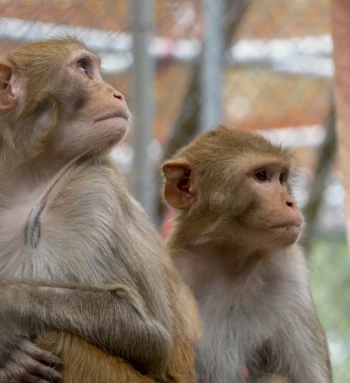Quality of life
The Biomedical Primate Research Centre (BPRC) has an excellent reputation in the field of expertise, colony management, housing and care for its animals. We apply sophisticated methods to minimise the discomfort experienced by the animals to the maximum extent possible, and we have a transparent policy with regard to animal welfare, because we feel that our monkeys deserve the best possible quality of life.
Born and bred at BPRC
All rhesus and crab-eating macaques and marmosets living at BPRC were born and bred at BPRC. While this breeding programme is expensive, it renders stressful transportation from breeding centres in countries such as China or Mauritius unnecessary. Occasionally we will buy a few monkeys from other specialist breeding centres when, in exceptional cases, we need more monkeys of a particular type than we have bred ourselves. We NEVER purchase monkeys that were caught in the wild, and we strictly observe all applicable European laws. We do very occasionally sell monkeys, but on a very limited scale, and only to research centres whose methods we know and understand – i.e., centres which meet all our research method requirements, and which uphold the highest animal welfare standards.
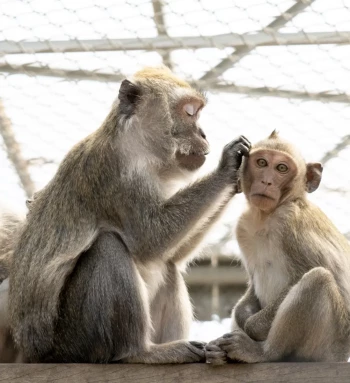
Later generations
Pursuant to European law, starting from 2022, all primates deployed for biomedical research must belong to generation F2 or later. This means they must be the second generation to be born in a breeding colony. The young of primates born in the wild belong to the F1 generation. F2 is the next generation. At BPRC have have much later generations, perhaps as late as the ninth or tenth generation. We do not have a single F0 monkey. We do still have a few F1 monkeys, as rhesus macaques can live up to thirty years. The few older monkeys we have – mostly females – live in natural groups and are not used for experimentation purposes. They are enjoying retirement. Actually, many of our animals spend their entire lives in breeding colonies, but that is a story that will be told elsewhere.
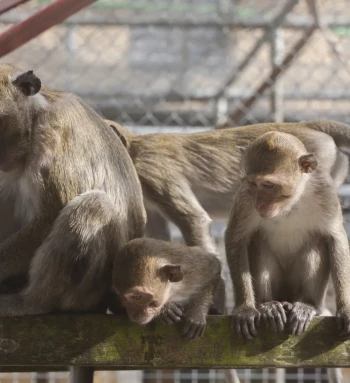
Living conditions
We perform experiments on animals to be able to combat life-threatening diseases worldwide. We contribute to the development of vaccines, medications and expertise, but we do ensure that the animals used in these experiments lead the best lives we can possibly give them. Our animals, born and bred to serve science, deserve the very best lives we can give them. We endeavour to give them good lives every day. We will continue, to the best of our ability, to give our animals pleasant lives for as long as animal testing continues to be necessary. We are clearly succeeding in doing so, given that our animal care workers have actually won awards ‘for their continued efforts to ensure that BPRC's monkeys have the best possible living conditions’.
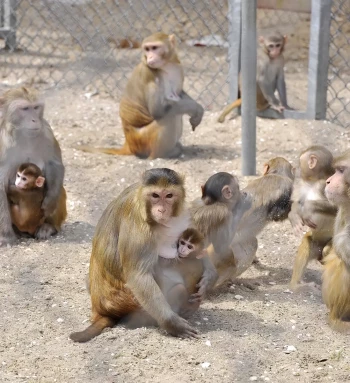
Housing contributing to lives well lived
As we have mentioned, animal welfare is a priority to us. Our monkeys must be given as much room as they need to be themselves and move around freely. It is vital to us that they lead happy lives, which costs a considerable amount of money. In order to ensure that BPRC can properly look after its animals, BPRC receives an annual grant from the Ministry of Education, Culture and Science. It is partially thanks to this grant that we have been able to improve our animal homes tremendously. The large enclosures we have now were developed in consultation with animal protection groups and zoos. They were developed to help us accommodate the animals in the best possible way and provide them with the best possible living conditions.
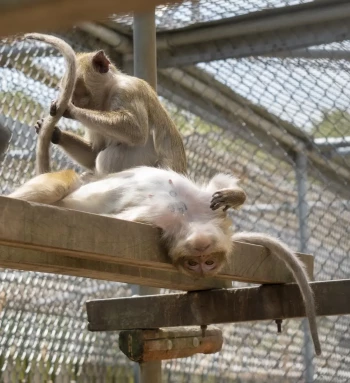
Group enclosures for our breeding colonies
The outdoor enclosures are large cages in which the monkeys have plenty of room to move freely and play to their hearts' content. They are free to make up their own minds as to whether they wish to be outdoors or indoors. We warm their cages in winter, to different temperatures for each species. For instance, crab-eating macaques need warmer cages than rhesus macaques. In order to ‘enrich’ their lives, we give them many toys and pieces of equipment, such as fire hoses, roosts for them to sit on, monkey bars, slides, balls, trapezes and mirrors. Our employees collected these objects for our monkeys, or alternatively, they were donated (or sometimes purchased after the gift of a grant) by sports clubs, the fire brigade, municipal authorities, companies and animal protection associations.
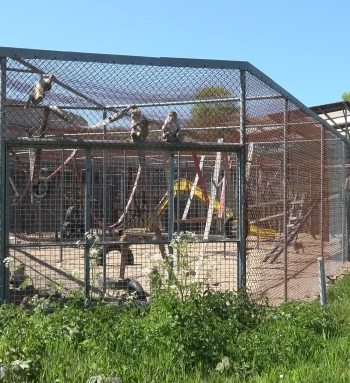
Enclosures for monkeys used in experiments
We also ‘enrich’ the indoor enclosures inhabited by monkeys used in experiments. These monkeys have smaller enclosures, but they are never alone in a cage. We always put at least two monkeys together. These animals, too, are given all sorts of toys, which are rotated regularly. We pay a lot of attention to food enrichment (see below) for the monkeys living in this part of the centre, even more so than for monkeys living outdoors. They get something new every day.
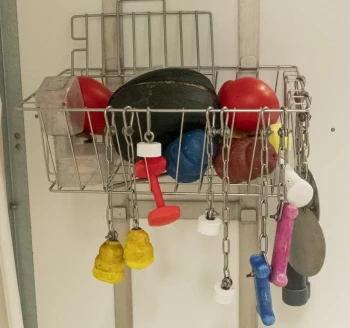
Food enrichment items
Another major component of our policy is so-called ‘food enrichment’. This means that we offer animals who are subject to an experimental protocol something new every day, ranging from icecream to food puzzles. We described and explained all forms of environmental enrichment used at BPRC for the various species of monkeys in the Enrichment Manual for Macaques and Marmosets we drew up in association with EUPRIM-NET, a major EU project.

The very highest standards
Our animal accommodation methods conform to the very highest standards in the world. While monkeys used for experimentation purposes have less perfect lives than monkeys living in the breeding colony, we still seek to give them the very best (group) accommodation, and we encourage them to engage in natural behaviour, by offering them non-food enrichment. All animals have bedding at all times, in the form of sawdust or straw. They do not have to lie on chicken wire, and are encouraged to forage in their bedding. In short, we do everything in our power to give our monkeys the highest possible quality of life, no matter what their circumstances.
